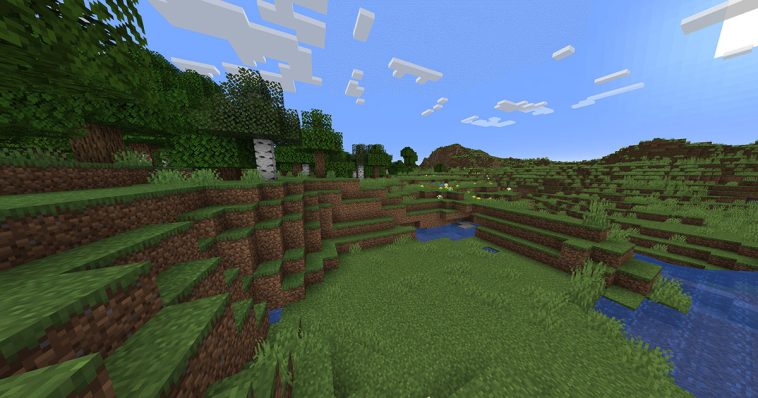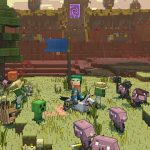Introduction.
Minecraft is an incredibly popular game, allowing players to build, explore, and survive in a blocky, procedurally-generated world.
For those looking to take their experience to the next level, especially if you’re into modding, you’ve probably heard of the term “Heavy Core Minecraft.”
This refers to a version of the game that’s been heavily modified with resource-intensive mods, shaders, and custom content, giving it a rich, immersive, and sometimes incredibly challenging performance profile.
Running a heavy-core version of Minecraft can transform your gameplay experience, but it’s not without its technical challenges.
I’ll walk you through how to set it up, what kind of hardware and software you’ll need, as well as some tips to ensure smooth gameplay without overwhelming your system. Ready to turn Minecraft into a next-level adventure?
Let’s dig in.
What is a Heavy Core Minecraft?
At its core, Minecraft is a lightweight game. But as players add mods—especially the demanding ones like high-resolution texture packs, shaders, and advanced mechanics—the game’s system requirements can skyrocket.
This “heavy core” setup can bring realistic lighting, detailed environments, and expanded gameplay features, but it also puts a significant strain on your hardware.
Heavy Core Minecraft refers to the experience of playing a highly-modded version of the game. This could include:
- Graphics Enhancements like SEUS, BSL, or Continuum shaders that make the game look stunning with realistic shadows, water reflections, and atmospheric lighting.
- Large Modpacks such as All The Mods 7 or RLCraft that add hundreds of new items, mechanics, and biomes.
- High-Resolution Textures like Faithful x64 or PureBDcraft that drastically increase the detail of the in-game blocks and items.
- Automation Mods like IndustrialCraft, Applied Energistics, or BuildCraft that introduce complex machine systems.
All of these mods require significant hardware power to run smoothly, especially when combined in a “heavy core” setup.
What You’ll Need to Run Heavy Core Minecraft
Running Minecraft with a heavy load of mods isn’t as simple as installing them and hitting “play.” You need the right hardware and software setup to ensure the game runs smoothly without constant lag or crashes.
1. Hardware Requirements
To run a heavy-mod Minecraft, you’ll need a system capable of handling the increased demands. Here’s what I recommend as the minimum and ideal system requirements:
- Minimum Requirements:
- CPU: Intel Core i5-4460 / AMD Ryzen 3 1200
- GPU: NVIDIA GTX 1050 Ti or AMD RX 570
- RAM: 8GB (dedicated 4GB to Minecraft)
- SSD for faster loading times
- Recommended Specs:
- CPU: Intel Core i7-9700K / AMD Ryzen 5 3600 or higher
- GPU: NVIDIA RTX 3060 or AMD RX 6700 XT
- RAM: 16GB (dedicated 6-8GB to Minecraft)
- SSD or NVMe drive for optimal loading speeds
Heavy mods like shaders and large modpacks are GPU and CPU intensive, so investing in a decent processor and graphics card will ensure the game doesn’t lag or crash during complex processes.
2. Software Setup
- Minecraft Java Edition: Most mods work with the Java version, so if you’re running Minecraft Bedrock, you’ll need to switch.
- Minecraft Forge or Fabric Mod Loader: These are essential mod loaders that act as the backbone for most mods. Forge is generally more supported but Fabric can be lighter and faster.
- OptiFine: For better optimization and improved graphical settings. OptiFine can help reduce the strain of shaders on your system.
- Java Runtime Environment (JRE): Make sure you have the latest version of Java installed, as Minecraft mods rely heavily on it.
3. Mod Recommendations
Here are some popular mods that will give you the “heavy core” experience:
- OptiFine – Essential for shaders and better graphics optimization.
- SEUS Renewed Shaders – Adds realistic lighting and shadows.
- RLCraft – A hardcore survival modpack with over 100 mods, focusing on RPG mechanics and challenging survival.
- All The Mods 7 – A massive modpack with over 300 mods, adding everything from new biomes to magical systems and tech.
- IndustrialCraft 2 – A classic tech mod adding machines, generators, and new crafting mechanics.
Pros and Cons of Heavy Core Minecraft
While running a heavily modded Minecraft can significantly enhance your gaming experience, it’s not without its downsides. Here’s a quick breakdown:
Pros
- Enhanced Gameplay: Mods can add new dimensions, mechanics, and creatures that completely change how Minecraft is played.
- Better Graphics: With shaders and high-res textures, Minecraft can look stunningly beautiful, far from the simple block graphics of vanilla.
- More Content: You’ll never run out of things to do. Some modpacks can add thousands of hours of additional content.
- Customization: Tailor your gameplay exactly how you like it. If you want more of a challenge or a more relaxed game, there’s a mod for that.
Cons
- System Strain: Heavy mods can put a serious load on your computer. Without the right hardware, you’ll experience lag, frame rate drops, and crashes.
- Compatibility Issues: Not all mods play well together. It’s common to experience crashes or bugs when mods conflict.
- Time-Consuming Setup: Installing and configuring mods isn’t always straightforward. It can take time to find compatible mods, install them, and troubleshoot issues.
- Frequent Updates: Minecraft and modding communities constantly update, which can make mods incompatible with newer versions, requiring you to wait for updates or downgrade your game.
Tips for Smooth Performance
- Allocate More RAM: Go to your Minecraft launcher settings and allocate more RAM to Minecraft, especially if you’re running large modpacks. Generally, 6-8GB is a safe range for heavy modding.
- Reduce Render Distance: Lowering the render distance can significantly improve performance, especially if your game starts to lag.
- Use Performance Mods: Mods like Sodium (for Fabric) or BetterFPS can help optimize performance and reduce lag in highly modded games.
- Keep Mods Updated: Ensure you’re using the latest version of all mods and your mod loader to avoid crashes and compatibility issues.
Conclusion
Heavy Core Minecraft can truly transform how you play the game, offering richer graphics, more complex mechanics, and endless content.
However, it’s not a setup for the faint of heart—you need the right hardware, time, and patience to get everything running smoothly.
So, is it worth the time and effort to turn Minecraft into a high-performance, modded beast, or is vanilla simplicity better for you?





GIPHY App Key not set. Please check settings